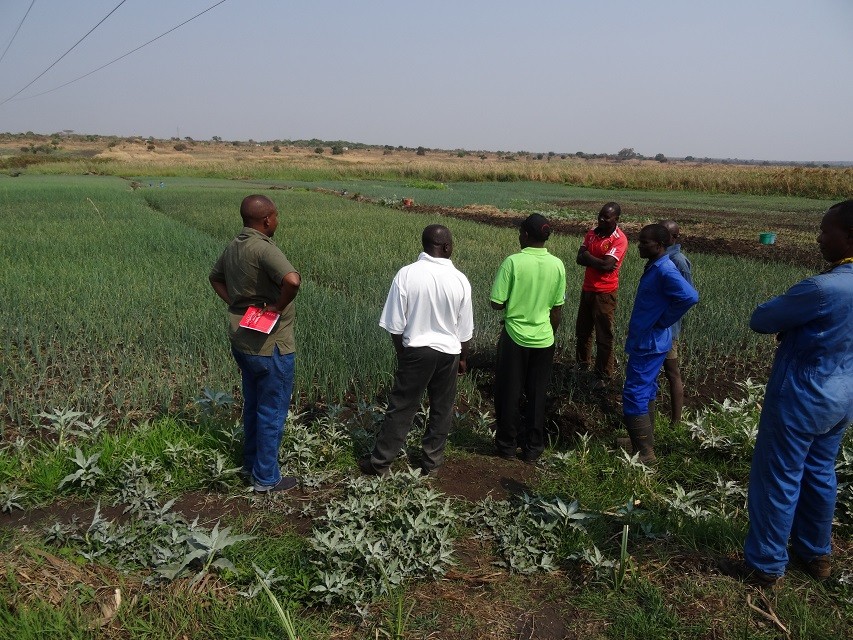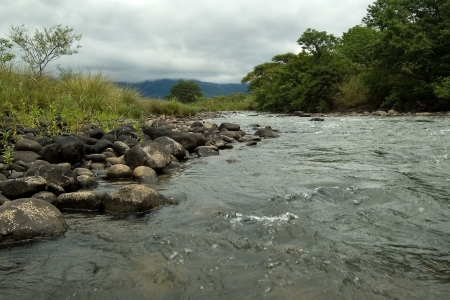World Wetlands Day was held on February 2nd by the Ramsar Convention on Wetlands. This post is part of the ongoing discussion on this year’s theme of sustainable livelihoods.
The old view that wetlands and agriculture are always in conflict should be assigned to the scrap heap. When managed properly, wetlands can be both an economic boon for communities across the world while providing the surrounding ecosystem with key environmental benefits and services. But a proper balance must be reached between the two.
In addition, many don’t realize is that wetland farming can provide much more than subsistence incomes for households. It can also be a source of capital or funds for investment, which can help farmers develop new enterprises and establish more diversified and resilient livelihood activities.
Zambian farmers become wetland entrepreneurs
Late in 2015, I returned to assess three seasonal wetlands, or dambos, in northern Zambia. A decade ago, just a few farmers in the area had just taken up seasonal wetland farming. But today, 260 farm households, some original trainees and some new adopters, are using these wetlands. Most produce small amounts of vegetables for the local markets in their village or the nearby district town which in turn supplements their domestic subsistence production. Any other income they have may be from the sale of upland crops and non-farm earnings.
However, two groups of farmers have done much more with their initial wetland farming earnings. The first group tended to save and invest as individual entrepreneurs:
Take Cecilia for example. After spending the necessary amount on school fees for her children, she decided to invest the rest of her wetland earnings on day-old chicks. From there she started a poultry rearing business at her home and now runs a successful enterprise selling roasted chicken to the new road construction team nearby.
The second group of farmers is entrepreneurial but more collaborative in nature. Forming a group with similar interests, Baldwin and his friends decided to focus on more distant, larger urban markets. He told me how he and his friends have worked together to explore how to use the wetland fringes along the Lwitikila river to grow onions. They identified markets for their onions that are up to 500km away in the mining towns of Zambia or the neighbouring Democratic Republic of Congo. Through mobile phone contact with traders, he and his team coordinate who will come to either collect this crop or pick it up from specified drop off points. Baldwin says that the potential for onion production along the dambos and river floodplains in northern Zambia is vast and he hopes that the mining boom in Congo will continue to provide him and his friends with traders loaded with dollars!
These Zambian farmers are not unique. A group of farmers in Kandomo village, northern Malawi have cornered the market in garlic. They have established links with traders who come to their 5 hectare wetland from Zambia and Tanzania, several hundred kilometres away. The traders compete with each other to buy the produce from the three harvests each year in this wetland.
Download the publication: Wetland Management and Sustainable Livelihoods in Africa
Sustainable land management underpins wetland agriculture
While wetlands can produce the capital that drives economic development and diversification at the same time, a wetland can be degraded and destroyed in the process if care is not taken. In northern Zambia, the need for catchment management to maintain the dry season flow of water has been recognised as critical. Furthermore, the communities are careful not to use the whole area covered by the wetlands: central areas are left in their natural state and only the seepage zones are cultivated with regular fallowing. Village natural resource management committees have been developed in each wetland farming village and these have developed bylaws through which they seek to apply sustainable land management practices in both the catchment and the wetland – what some call a functional landscape approach.
Opportunities to use seasonal wetlands in Africa vary. They are specific to the biophysical characteristics of sites, the skills and expertise of communities and the market opportunities. Not all wetlands will generate capital through seasonal cultivation, which can help drive forward farm enterprise development. However, many wetlands can do this to varying extents and so play a role in diversifying farmers’ enterprises and improving village-level food security and resilience in the face of climate change. Wetland agriculture, when managed sustainably, has a critical role to play in the development of sustainable livelihoods and should be fostered.
When wetlands are valued and are used sustainably by communities, they have great potential to stimulate livelihood development and resilience.
















